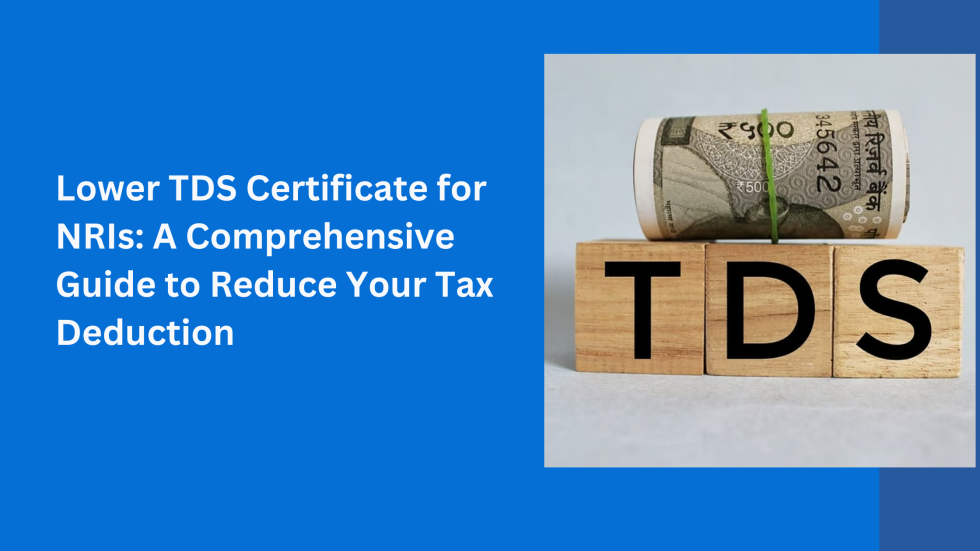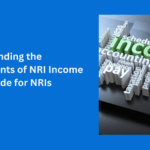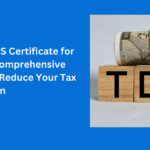When NRIs sell property in India or earn other forms of income, such as rental or investment income, the Indian government imposes a tax withholding mechanism called Tax Deducted at Source (TDS). The process can often be confusing for NRIs, especially when the TDS deductions exceed the actual tax liability. Fortunately, NRIs can apply for a Lower TDS Certificate, which helps reduce these excessive deductions. This comprehensive guide will explain how to apply for this certificate and ensure you’re only taxed appropriately, thereby improving your cash flow and avoiding unnecessary tax burdens.
What is TDS for NRIs?
TDS (Tax Deducted at Source) is a method where the payer deducts a certain percentage of tax from the payment made to the payee (NRIs in this case) and deposits it directly with the government. Under Section 195 of the Income Tax Act, NRIs are subject to TDS on various types of income earned in India, including rental income, interest on bank deposits, capital gains, and more. However, NRIs cannot use Form 15G/15H (available to residents) to reduce their TDS deductions. Instead, they must apply for a Lower TDS Certificate from the Assessing Officer (AO).
Who Can Apply for a Lower TDS Certificate?
NRIs with substantial income or income exceeding the basic exemption limit in India are eligible to apply for the Lower TDS Certificate. This certificate helps reduce the TDS deducted, especially when the NRI’s total income falls below the taxable threshold or when specific exemptions apply. For property sales, NRIs can apply for the Lower TDS Certificate to reduce the higher TDS deductions.
How to Apply for a Lower TDS Certificate?
The application process to obtain a Lower TDS Certificate is straightforward and involves submitting Form 13 to the Assessing Officer (AO). Here’s the step-by-step process:
- Log in to the TRACES Portal: Start by visiting the official TRACES portal.
- Request Form 13: In the portal, navigate to the “Request for Form 13” section.
- Fill in Income Details: Provide a detailed breakdown of your income, tax liabilities, and the amount for which you want to reduce the TDS.
- Upload Required Documents: Submit documents such as income statements, tax liabilities, financial statements, and any supporting documents related to your capital gains or other incomes.
- E-Verify the Application: Use Aadhaar OTP, Net Banking, or a Digital Signature Certificate (DSC) to verify the application.
Documents Required for Form 13
To apply for a Lower TDS Certificate, you will need to submit the following documents:
- Form 13 (duly signed)
- PAN Card
- Income Tax Return (ITR) acknowledgment for the last 3 years
- Tax Deduction Account Number (TAN) of the payer
- Capital gains documents (if applicable)
- Form 26AS (for verification of TDS already deducted)
- Other income-related documents as required
What Happens After Submitting Form 13?
Once Form 13 is submitted, the Assessing Officer will review your application:
- Verification by the AO: The AO will verify your application and supporting documents. The Income Tax Department’s software may suggest a lower TDS rate based on your information.
- Decision by the AO: The AO will approve or reject the application. If approved, you will receive a Lower TDS Certificate specifying the reduced TDS rate and its validity period.
What Happens if the Application is Rejected?
If your application for a Lower TDS Certificate is rejected, you will be taxed at the standard TDS rate. However, you can appeal the decision if you believe the rejection was made in error.
Importance of Lower TDS Certificate for NRIs
The Lower TDS Certificate plays a critical role in ensuring that NRIs are not over-taxed and that their income is not subject to excessive TDS deductions. By obtaining this certificate, NRIs can have better control over their finances and avoid the hassle of waiting for tax refunds after the TDS is deducted.
Benefits of Lower TDS for NRIs
- Avoid Over-Taxation: Ensures that only the required tax is deducted, reducing excess tax payments.
- Faster Refunds: Reduces the waiting time for tax refunds when filing your tax return.
- Optimized Tax Filing: Simplifies the tax filing process and ensures compliance with Indian tax laws.
Conclusion
Applying for a Lower TDS Certificate is crucial for NRIs to ensure tax efficiency and compliance when earning income in India. It helps reduce unnecessary TDS deductions and can result in quicker refunds. By following the right steps and providing the necessary documents, NRIs can minimize their tax liabilities and optimize their finances.
At NRI Edge, we specialize in providing expert guidance on tax planning, TDS compliance, and other NRI-related financial matters. Contact us today for personalized assistance with obtaining your Lower TDS Certificate and ensuring smooth property and income transactions.
Frequently Asked Questions (FAQs)
- Can an NRI apply for a lower TDS certificate?
Yes, NRIs can apply for a reduced or zero TDS certificate through Form 13, submitted online and verified through Aadhaar OTP or DSC. - How can NRIs lower TDS on property sales?
NRIs can apply for a Lower TDS Certificate to reduce TDS on property sales and other incomes. - What is a lower TDS certificate for NRIs?
It’s a certificate that reduces the TDS deduction at source for NRIs, helping them avoid over-taxation. - How long does it take to get a lower TDS certificate for NRIs?
It takes about 3-6 weeks for the application to be processed, and the certificate is valid for a specific fiscal year.
Is TDS compulsory for NRIs?
Yes, under Section 195 of the Income Tax Act, TDS is mandatory on payments made to NRIs. The payer is required to deduct TDS before making payments to the NRI.






